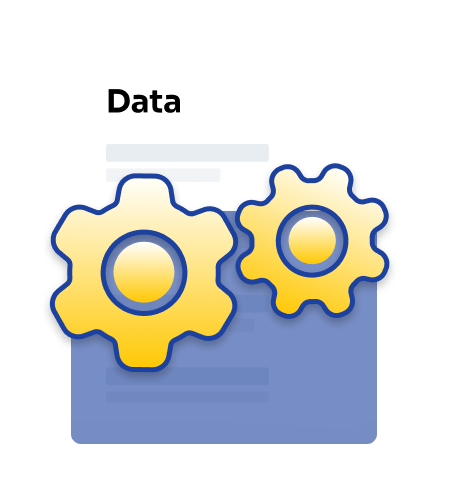Introduction
In the current era of technological advancements and extensive data usage, organizations encounter a perpetual obstacle of safeguarding their sensitive data against potential vulnerabilities, including data breaches, cyber attacks, and human errors. Consequently, the need to produce high-quality content has become increasingly important to acquire good search rankings. This article delves into the significant role of automation in reducing an organization’s exposure to sensitive data and how it can contribute to surpassing competitors in terms of content quality. By utilizing automation, businesses can streamline their processes and ensure secure data management, leading to a competitive edge in their respective industries.
The challenge of protecting sensitive data
Safeguarding sensitive information is of paramount importance for organizations operating in diverse industries. Nevertheless, traditional manual security operations tend to be insufficient in effectively mitigating the constantly evolving landscape of cyber threats. The human element in such operations often introduces the potential for errors and delays, making it imperative to integrate automation as a crucial component of a comprehensive security strategy. By leveraging automated security measures, companies can ensure enhanced protection of their sensitive data and stay ahead of potential security breaches.
Leveraging automation for enhanced data security
Data security has become a top priority for businesses of all sizes. As the threat of cyber attacks continues to increase, organizations are seeking new and innovative ways to protect their valuable data. One solution that has gained popularity in recent years is the use of automation technology. By leveraging automation tools, companies can enhance their data security measures and better safeguard their sensitive information. Whether it’s through the use of advanced encryption methods or automated monitoring systems, automation can help businesses stay one step ahead of potential threats and ensure that their data remains safe and secure.
Automated vulnerability scanning and patch management
One of the critical aspects of data security is identifying and addressing vulnerabilities in an organization’s network and systems. Automation plays a pivotal role in this process through automated vulnerability scanning. Advanced algorithms and machine learning techniques enable vulnerability scanners to proactively detect weaknesses, such as outdated software versions, misconfigurations, and common attack vectors. Additionally, automation streamlines patch management, ensuring the timely deployment of software updates and security patches to reduce the attack surface for potential threats.
Automated vulnerability scanning and patch management systems continuously monitor an organization’s infrastructure, scanning for known vulnerabilities and ensuring that the latest security patches are applied promptly. By automating these processes, organizations can minimize the window of opportunity for attackers to exploit vulnerabilities and gain unauthorized access to sensitive data. Regular vulnerability scans and patch management help maintain a robust security posture, reducing the risk of data breaches and cyber attacks.

Security orchestration and incident response
While preventive measures are essential, incidents can still occur. Therefore, effective incident response is crucial for minimizing the impact of security breaches. Automation aids in security orchestration, integrating various security tools, technologies, and processes to streamline incident response workflows. Automated incident response enables organizations to rapidly identify, investigate, and mitigate threats, reducing the mean time to detect and respond to incidents. Predefined playbooks facilitate coordinated responses and the execution of specific tasks based on the incident’s nature, freeing up security teams from time-consuming manual tasks.
By automating incident response, organizations can achieve a consistent and efficient approach to handling security incidents. Automated systems can generate alerts, gather relevant data, and initiate response actions based on predefined rules and workflows. This accelerates incident detection and response, enabling organizations to minimize the impact of security breaches and swiftly restore normal operations. Automation also allows for better incident documentation and post-incident analysis, contributing to continuous improvement in security processes.
Access controls and privileged account management
Controlling access to sensitive data is vital to prevent unauthorized exposure. Automation enables organizations to enforce granular permissions through advanced access control systems. By leveraging automation, organizations can ensure that only authorized individuals can access specific information, minimizing the risk of data breaches. Furthermore, automated privileged account management solutions assist in managing and monitoring privileged credentials, reducing the risk of insider threats. Centralizing access controls and employing automation strengthens data security and enforces the principle of least privilege, minimizing potential damage caused by compromised accounts.
Automated access control systems provide organizations with the ability to define and enforce fine-grained access policies. These systems can integrate with identity and authentication providers, allowing for centralized management of user access across various applications and systems. Automation ensures that access permissions are granted based on the principle of least privilege, granting users only the privileges necessary to perform their assigned tasks. Furthermore, automated monitoring of privileged accounts helps organizations detect and respond to suspicious activities, mitigating the risks associated with insider threats.
Compliance automation for regulatory requirements
Compliance with industry regulations and data privacy laws is paramount for organizations handling sensitive information. Automation plays a significant role in facilitating regulatory compliance by enforcing access controls, encryption, and classification rules. Automated systems help organizations demonstrate their commitment to safeguarding sensitive data, avoiding costly penalties associated with non-compliance. Additionally, automation aids in monitoring and auditing data access, ensuring comprehensive records for compliance purposes.
Automated compliance solutions can assess an organization’s adherence to regulatory requirements by continuously monitoring access controls, encryption measures, and data handling practices. These solutions generate reports and alerts, highlighting areas where the organization may be at risk of non-compliance. Organizations can proactively identify and address potential compliance gaps by automating compliance processes, reducing the likelihood of regulatory violations and the associated financial and reputational consequences.

The benefits of automation in data security
Data security is very important in today’s fast-paced technological world. Cyber attacks and data breaches are constant threats, so it’s crucial to have strong security measures. One way to enhance security is through automation. This means using software and tools to do tasks that would normally require humans, like monitoring network traffic and managing sensitive data access. Automation has many benefits for data security, including the following:
Improved operational efficiency and accuracy
Automation significantly improves the efficiency of security operations by eliminating manual and repetitive tasks. Security professionals can focus their expertise on high-value activities such as threat analysis, incident response, and proactive security strategy development. Automated systems are not susceptible to human error and fatigue, ensuring the consistent and accurate execution of security controls and response actions. By reducing reliance on manual efforts, organizations can achieve higher productivity levels and allocate resources effectively.
Automated systems can handle time-consuming and repetitive tasks such as log analysis, alert triage, and routine security monitoring. This allows security teams to prioritize their efforts on critical tasks that require human judgment and expertise. By leveraging automation, organizations can optimize resource allocation, streamline workflows, and improve operational efficiency, resulting in more effective security operations.
Enhanced threat detection and response capabilities
Automated security solutions leverage advanced technologies like artificial intelligence (AI) and machine learning (ML) to analyze vast amounts of data in real time. These systems excel at detecting patterns, anomalies, and indicators of compromise that may go unnoticed by human operators. By automating monitoring and analysis, organizations can generate alerts and prioritize potential threats based on their severity, enabling security teams to respond rapidly and mitigate risks. Automation empowers organizations to strengthen their cybersecurity posture and stay ahead of evolving threat actors.
To identify potential threats and malicious activities, AI and ML algorithms can analyze security data from multiple sources, including network logs, endpoint events, and threat intelligence feeds. Automated threat detection systems can correlate events and behaviors, detect emerging attack patterns, and generate actionable insights for security teams. This enables organizations to proactively defend against cyber threats, minimizing the impact of security incidents and reducing the time to detect and respond to threats.

Conclusion
Data security is of paramount importance, especially for organizations that deal with sensitive information. The risks associated with data breaches, cyber threats, and human errors are significant and can have severe consequences. As such, companies must take proactive measures to strengthen their security posture and minimize their exposure to potential threats. One of the most effective ways to achieve this is through automation.
Automated security solutions offer a range of benefits, including improved vulnerability scanning, security orchestration, access controls, compliance automation, and continuous monitoring. By leveraging these tools, organizations can enhance their data security measures, outperform competitors, and mitigate the risks associated with cyber threats. Automation empowers security teams to focus on strategic initiatives, respond swiftly to incidents, and ensure regulatory compliance, all while reducing the likelihood of human error.
Moreover, automation has become an integral part of data security, given the complex and evolving landscape of cybersecurity. It is not enough to rely on manual processes, which can be time-consuming, error-prone, and costly. Instead, automation enables organizations to streamline their security operations, reduce operational costs, and improve their overall security posture. As such, businesses that embrace automation as part of their data security strategy are better equipped to protect their data, maintain customer trust, and achieve their business objectives.




